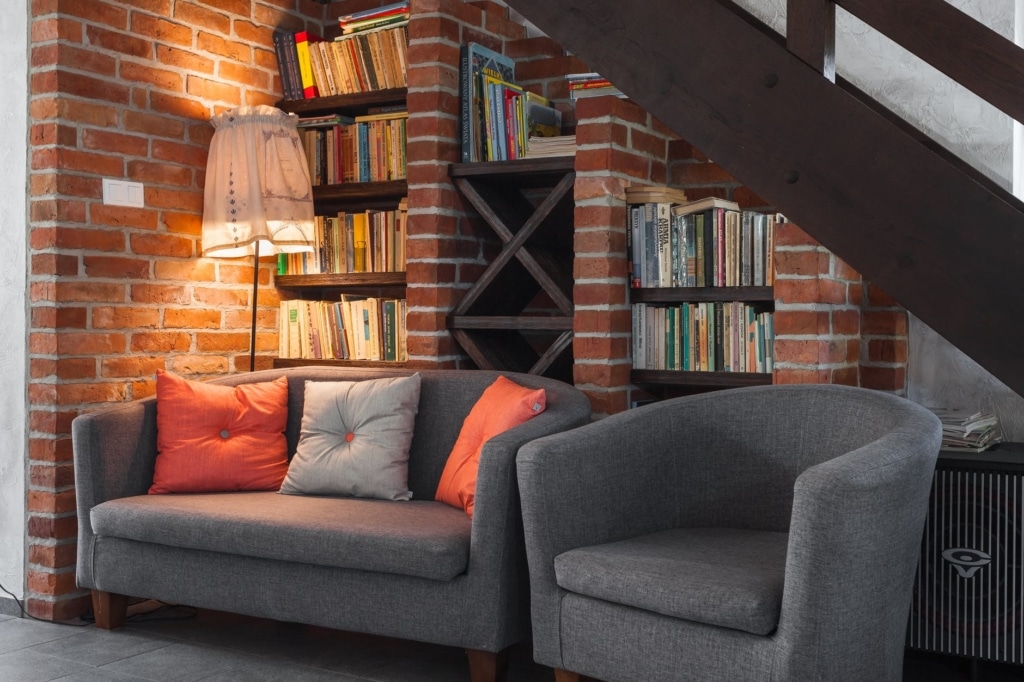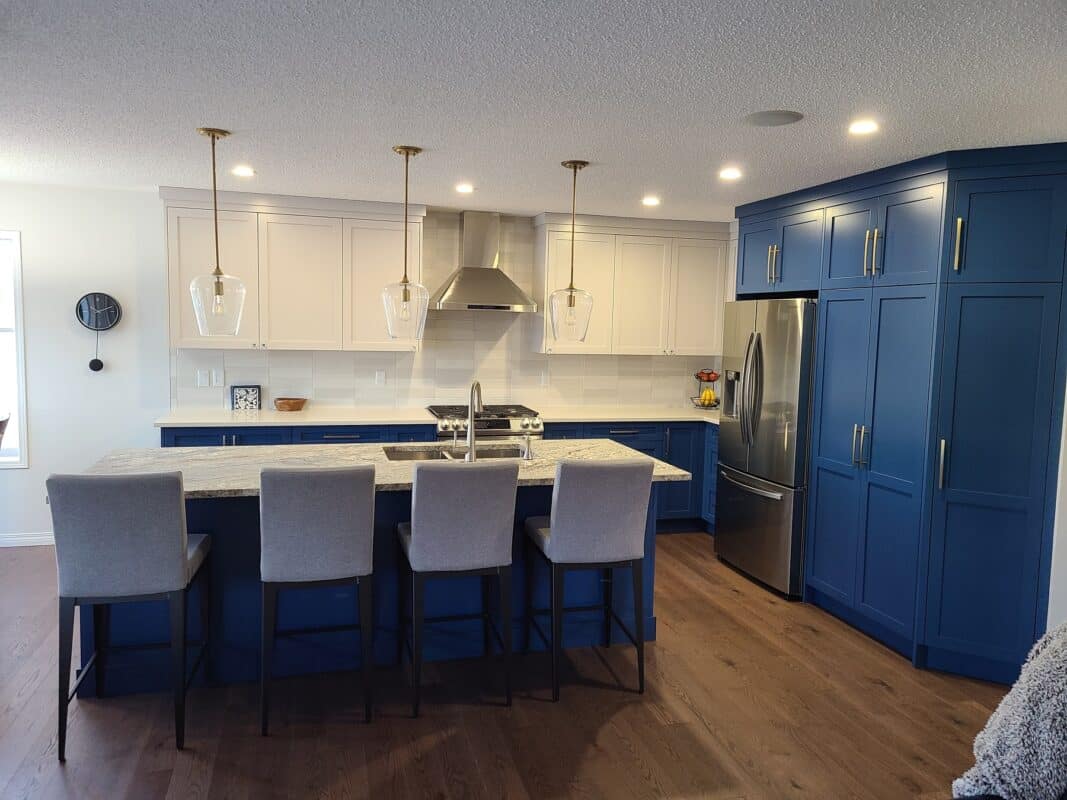A kitchen is more than just a place to cook; it’s the heart of the home, where meals are prepared, families gather, and memories are made. However, without proper kitchen organization, this central hub can quickly become a site of stress and chaos. Organizing your kitchen not only enhances its aesthetic appeal but also optimizes its functionality, making every cooking experience more enjoyable and efficient. This guide will explore the essential benefits of a well-organized kitchen and provide practical tips and innovative solutions to transform your kitchen into a model of efficiency and pleasure.
An organized kitchen is a powerful tool for anyone who spends time cooking or entertaining. It saves time, reduces stress, and can even help improve your eating habits. By knowing exactly where every ingredient and utensil is, you can streamline your cooking process and reduce the time spent searching for items. This heightened efficiency makes meal preparation faster and more enjoyable, offering more time to focus on creating delicious dishes.
The benefits of an organized kitchen extend beyond simple aesthetics. A clutter-free kitchen promotes better hygiene and safety. With everything in its rightful place, cleaning becomes more systematic and thorough, reducing the risk of foodborne illnesses. Additionally, well-organized kitchens prevent accidents by eliminating clutter on countertops and ensuring that every tool is safely stored and easily accessible.
Moreover, an organized kitchen can lead to significant economic benefits. With a clear inventory of ingredients and streamlined storage solutions, you can avoid overbuying or wasting food. This not only helps in saving money but also contributes to a more sustainable living environment. As we delve deeper into this guide, we will uncover the secrets to achieving and maintaining an organized kitchen that enhances both function and form.
Why Kitchen Organization is Essential
Improving Effieciency
Efficiency in the kitchen is not just about speeding up the cooking process; it’s about creating a system that allows for easy access and minimal disruption. An organized kitchen means less time wasted searching for ingredients or tools, which translates to quicker meal preparation. By having a designated spot for every item, you can significantly cut down the time you spend on preparing meals.
Reducing Stress
The emotional benefits of an organized kitchen are immense. A clutter-free environment reduces stress by providing a sense of control and order. Cooking in an organized kitchen becomes a pleasure rather than a chore, enhancing the overall experience. This positive atmosphere can transform cooking from a daily necessity into a therapeutic activity, especially after a long day.
Enhancing Safety
Safety in the kitchen is paramount, and organization plays a crucial role in ensuring it. Proper storage of knives, appliances, and other hazardous items can prevent accidents and injuries. Additionally, organizing food storage areas helps in maintaining better hygiene, as it reduces the chances of cross-contamination and makes it easier to keep the space clean.
Saving Money
Financial savings are another significant advantage of maintaining an organized kitchen. By knowing exactly what you have, you can avoid purchasing duplicate items, reduce food waste, and make more informed shopping decisions. This kitchen organization leads to more efficient grocery shopping, as it prevents impulsive buys and helps stick to a budget.
Creating Efective Workflow
Creating a workflow in your kitchen based on how you cook can dramatically increase efficiency. Place frequently used items within easy reach, and store special-occasion tools and appliances in less accessible areas. This method ensures that everyday cooking is streamlined, while less commonly used items don’t clutter your workspace.
Start Fresh
To begin organizing, start by emptying all cabinets and drawers. This approach gives you a clean slate to work with and helps you take stock of what you own, what you need, and what can be donated or thrown away. It’s a crucial first step that prepares the space for a new kitchen organizational system.
Improtance of Decluttering
Decluttering is not a one-time task but a regular necessity. Kitchens tend to accumulate things over time, so regular checks are vital to remove items that no longer serve a purpose. This continual process helps maintain order and prevents the kitchen from reverting to chaos.
Making Use of Vertical Space
Maximizing vertical space is an excellent way for adding storage without taking up valuable floor space. Install shelves and hooks on walls and use the insides of cabinet doors for additional storage. These solutions can hold everything from pots and pans to spices and utensils, making them easily accessible yet out of the way.
Zoning for Efficiency
Zone kitchen organization is a strategic approach that involves grouping items by their use and the frequency of use. Create different zones for cooking, baking, meal prep, and cleaning. This system not only streamlines the process but also saves energy and time by reducing unnecessary movements.
Labeling for Convenience
Proper labeling is a small task that makes a big difference. Labeling shelves, bins, and containers not only helps in identifying items quickly but also aids in maintaining order as everyone in the household knows where things belong.
Choosing the Right Tools
Investing in quality storage solutions can transform your kitchen. Options such as pull-out cabinets, drawer organizers, and ceiling-mounted racks can greatly enhance the usability and efficiency of your space. Tailoring these solutions to fit your specific needs can make a significant impact on your kitchen’s functionality.
Reevaluting Kitchen Organization
Reassess your organization system periodically. Needs and habits change, and your kitchen should evolve too. What worked one year might not be as effective the next. Regularly reevaluating your space and systems will ensure they remain functional and beneficial.
Waste Managment System
Implementing clear systems for waste management, including designated bins for recycling, compost, and trash, can help maintain cleanliness and order in the kitchen. Effective waste management is not only good for the environment but also for keeping your kitchen tidy.
Family Involvement
Ensure that every family member knows the organizational systems and participates in maintaining them. Shared responsibility helps in keeping the space organized and clean, making it easier for everyone to find and use the kitchen effectively.
Adapting to Changes
Flexibility in kitchen organization allows for adjustments based on seasonal changes or new cooking trends. Adaptable storage solutions, such as adjustable shelves or modular drawer organizers, can accommodate different items as needed, providing lasting functionality.
Maintaining Order
By understanding the multiple layers of benefits provided by a well-organized kitchen, it’s clear why taking the time to create and maintain an organized space is essential. The following sections will provide detailed tips on how to achieve this organization and explore innovative solutions to common storage issues.
Top Tips for Kitchen Organization
- Begin the process of organizing your kitchen by thoroughly cleaning out all storage areas. This initial step is crucial for assessing what you have and determining the best way to organize it. A clean slate allows for a clearer vision of the space and how it can be optimized.
- The first rule of maintaining an organized kitchen is to declutter regularly. Kitchens are dynamic environments where items come and go. Regularly assessing what you use and what just takes up space can keep your kitchen functional and clutter-free.
- When reorganizing, consider every item’s utility. If something hasn’t been used in over a year, it might be time to donate or dispose of it. This approach helps minimize clutter and maintain only what is necessary and frequently used.
- Efficient storage is key to a well-organized kitchen. Investing in uniform storage containers can save space and create a more cohesive look. These containers can be used to store dry goods, leftovers, or even non-food items, keeping counters and shelves neat.
- Labeling is an effective tool for maintaining you kitchen organization. Clear labels help everyone in the household know where items belong, which is especially useful in a busy kitchen. Labels can be used on shelves, bins, and containers to streamline storage and retrieval processes.
- Utilize every available space in your kitchen by embracing vertical storage solutions. Installing shelves above the counter or hooks under cabinets can provide extra storage space for items that don’t fit in drawers or on countertops.
- Group items by their use to create an efficient workflow. This method involves organizing your kitchen so that everything needed for a specific task is together. For example, keep all baking ingredients and tools in one area to simplify the process of making baked goods.
- Use drawer dividers to keep utensils and small tools organized. These dividers help prevent the jumble of tools in drawers, making it easier to find what you need without digging through a cluttered space.
- Consider the ergonomics of your kitchen when organizing. Place frequently used items at arm’s reach and store heavy items at waist level to minimize strain. This thoughtful placement can make daily tasks easier and more comfortable.
- Incorporate pull-out cabinets or rotating inserts like lazy Susans for corner cabinets. These features make it easier to access items that would otherwise be hard to reach, maximizing the usability of all cabinet spaces.
- For small appliances that are not used daily, designate a cabinet or specific area to store them. This practice keeps countertops clear and ensures that these appliances are accessible when needed without taking up valuable working space.
- Use clear containers for storing perishables in the refrigerator and pantry. This visibility saves time and reduces food waste by allowing you to see what you have at a glance, preventing items from being forgotten and spoiling.
- Keep a running inventory of pantry staples to prevent overbuying or running out of essential items. This list can help streamline grocery shopping and ensure you always have what you need for your favorite recipes.
- Implement a first-in, first-out (FIFO) system, especially in the pantry. Store newer items at the back and move older items to the front to ensure they are used before expiring. This system is particularly useful for managing stocks of canned goods and dry ingredients.
- Dedicate an area for meal preparation. This space should be clear of clutter and conveniently located next to utensils and ingredients needed for meal prep. Having a dedicated spot can simplify the cooking process and reduce cleanup time.
- For those who enjoy entertaining, create a specific area in your kitchen to store party supplies, such as serving platters, cocktail accessories, and other entertainment items. Keeping these items together makes it easier to host events and ensures that you’re always ready for guests.
- Kitchen organization isn’t just about functionality; it can also enhance the room’s aesthetic appeal. Choosing storage solutions that complement your kitchen’s style can add to the overall decor while keeping the space tidy.
- Encourage all family members to participate in maintaining the organization. Establish simple, clear guidelines for where items belong and the importance of putting things back in their place. This shared responsibility can help keep the kitchen organized and reduce the burden on any one person.
- Consider seasonal changes in your kitchen organization. For example, make adjustments to accommodate holiday cooking supplies or seasonal appliances that are not used year-round. This flexibility can help maintain order throughout the year.
- Be creative with storage solutions. Use items like magazine holders for storing chopping boards and hanging baskets for fruits. These unique solutions can add character to your kitchen while improving its functionality.
- Reflect on your kitchen’s organization regularly and be open to change. What works well at one time may need adjustment as your needs and lifestyle change. Regularly reassessing your space and systems ensures they continue to work effectively for you.
- Remember that the goal of kitchen organization is to create a space that is efficient, enjoyable, and easy to use. By following these tips and continuing to adapt your space to suit your needs, you can ensure that your kitchen remains a functional and pleasant part of your home.
Innovative Storage Solutions
- When considering how to enhance the storage capabilities of your kitchen, it’s worth looking into custom cabinetry. Custom cabinets are designed to fit the exact dimensions of your kitchen, maximizing storage space and efficiency. They can be tailored to accommodate any specific needs or preferences, such as spice cabinets, pull-out shelves, or even hidden drawers.
- Another aspect of modern kitchen storage is the integration of smart appliances. Appliances such as refrigerators with customizable storage options or dishwashers with adjustable racks can significantly improve the functionality of your kitchen. These smart appliances often come with features that help optimize space and efficiency.
- For kitchens with limited space, retractable features can be a game-changer. Options like retractable tables, fold-down counters, and sliding pantry doors provide additional work and storage space only when needed, keeping the kitchen spacious and clutter-free when not in use.
- Utilizing the space inside cabinet doors can provide extra storage for small items and tools. Install racks or hooks on the inside of doors to hang pots, pans, or cleaning supplies. This not only saves space but also keeps these items out of sight for a cleaner look.
- Ceiling-mounted racks are excellent for storing pots and pans overhead. This storage solution keeps heavy items off the countertops and within easy reach while cooking. It also adds a professional touch to the kitchen’s appearance.
- Magnetic knife strips are a stylish and practical way to store knives. Mounted on the wall, they save counter space and keep knives easily accessible and safely out of the reach of children.
- For those with island counters, integrating storage solutions into the island can provide substantial extra space. Drawers, shelves, and cabinets in the island can house a variety of items, making the island not only a focal point for socializing but also a functional part of the kitchen’s storage system.
- Adjustable shelving in cabinets allows for customization based on the size of items being stored. This flexibility can accommodate everything from tall appliances to stacked dishes, maximizing the utility of cabinet space.
- Use the area under the sink efficiently by installing pull-out drawers or organizing bins. This often under-utilized space can store cleaning supplies, trash bins, and recycling containers, keeping them handy but out of sight.
- Consider installing a pantry system with pull-out shelves. This feature allows for easy access to items at the back of the pantry, ensuring that nothing gets lost or forgotten. It’s particularly useful for larger kitchens with deep pantry spaces.
- For utensils and smaller kitchen tools, drawer organizers are essential. They help keep items sorted and accessible, preventing the common clutter that can accumulate in kitchen drawers.
- Lastly, for beverage enthusiasts, consider dedicated storage for wine and other beverages. Whether it’s a built-in wine rack or a specialized refrigerator, proper storage can enhance the enjoyment and longevity of your collection.
- By incorporating these innovative storage solutions, you can significantly enhance the functionality and aesthetic of your kitchen. These solutions not only help organize your space but also add convenience and style, making your kitchen a joy to use.
Maintaining Your Organized Kitchen
- Maintaining an organized kitchen requires regular attention and adjustment. Schedule monthly or quarterly reviews of your kitchen’s organization to ensure that it continues to meet your needs. This regular check-up allows you to tweak and refine your system, keeping it efficient and useful.
- Encourage family members to participate in keeping the kitchen organized. Assign specific tasks or areas for each person to manage, such as ensuring that the snack drawer remains tidy or that the utensils are always returned to the right place. This collective effort not only maintains the organization but also builds a sense of responsibility and cooperation among all users of the kitchen.
- Be flexible with your organizational system. As your family’s needs and cooking habits change, so should your organization strategy. Be open to rearranging items, changing out storage solutions, or even redesigning areas of the kitchen to better serve its current uses.
- Seasonal changes often require adjustments to the kitchen’s organization. For example, during the holiday season, you may need more space for baking supplies and large serving dishes. Adjust your storage areas to accommodate these seasonal items when they’re in use and store them away when not needed.
- Keep a dedicated space for new items that enter the kitchen, such as groceries or new appliances. This “staging area” allows you to decide where these new items should go, preventing them from being hastily placed in the wrong spots and disrupting the existing kitchen organization.
- Regularly declutter your kitchen to remove items that are no longer needed or used. This can involve discarding old spices, donating duplicate tools, or recycling unused containers. A clutter-free kitchen is easier to organize and maintain.
- Implement a “one in, one out” rule to prevent overcrowding in your kitchen. Whenever a new item is added, an older, less useful item should be removed. This rule helps keep the number of items in your kitchen manageable and ensures that storage spaces are not overstretched.
- Educate all household members on the importance of keeping the kitchen organized. This can involve simple training on where items are stored and the benefits of keeping the space orderly. Understanding the reasons behind kitchen organization can motivate better compliance and maintenance.
- Use reminders or labels to help maintain the kitchen organization. For example, label shelves in the pantry or use color-coded bins for different categories of items. These visual cues can help ensure that everyone knows where things belong and returns them to the right place.
- Be proactive about cleaning and maintaining storage areas. Regular cleaning of cabinets, drawers, and containers not only helps maintain hygiene but also prevents the buildup of clutter. A clean kitchen is more inviting and easier to keep organized.
- Review and adjust your kitchen’s lighting to ensure that all areas are well-lit. Good lighting can help prevent accidents, make it easier to find items, and enhance the overall ambiance of the kitchen. Well-lit areas are typically easier to keep organized and clean.
- Lastly, celebrate the successes of maintaining an organized kitchen. Recognize the efforts of family members and the benefits that a well-organized space brings to everyone’s daily life. This positive reinforcement can encourage ongoing participation and pride in a tidy kitchen.
- By following these steps and incorporating regular maintenance into your routine, you can ensure that your kitchen remains a well-organized, functional, and welcoming space for all to enjoy.
Conclusion
The journey to a well-organized kitchen is ongoing, requiring commitment and regular adjustments to keep up with the changing dynamics of household life. By investing in the right storage solutions, maintaining a systematic approach to kitchen organization, and involving all family members in the upkeep, your kitchen can serve as a functional, stress-free, and enjoyable space.
Remember, the benefits of a well-organized kitchen extend far beyond aesthetics. They enhance safety, improve efficiency, and can even lead to better health and financial savings. Take the first step today, and transform your kitchen into a model of efficiency and enjoyment.
Ready to transform your kitchen into a masterpiece of organization and efficiency? Contact us today for personalized solutions and expert advice. Let us help you create the perfect kitchen that meets all your needs and exceeds your expectations.















One thought on “Ultimate Guide to Kitchen Organization”